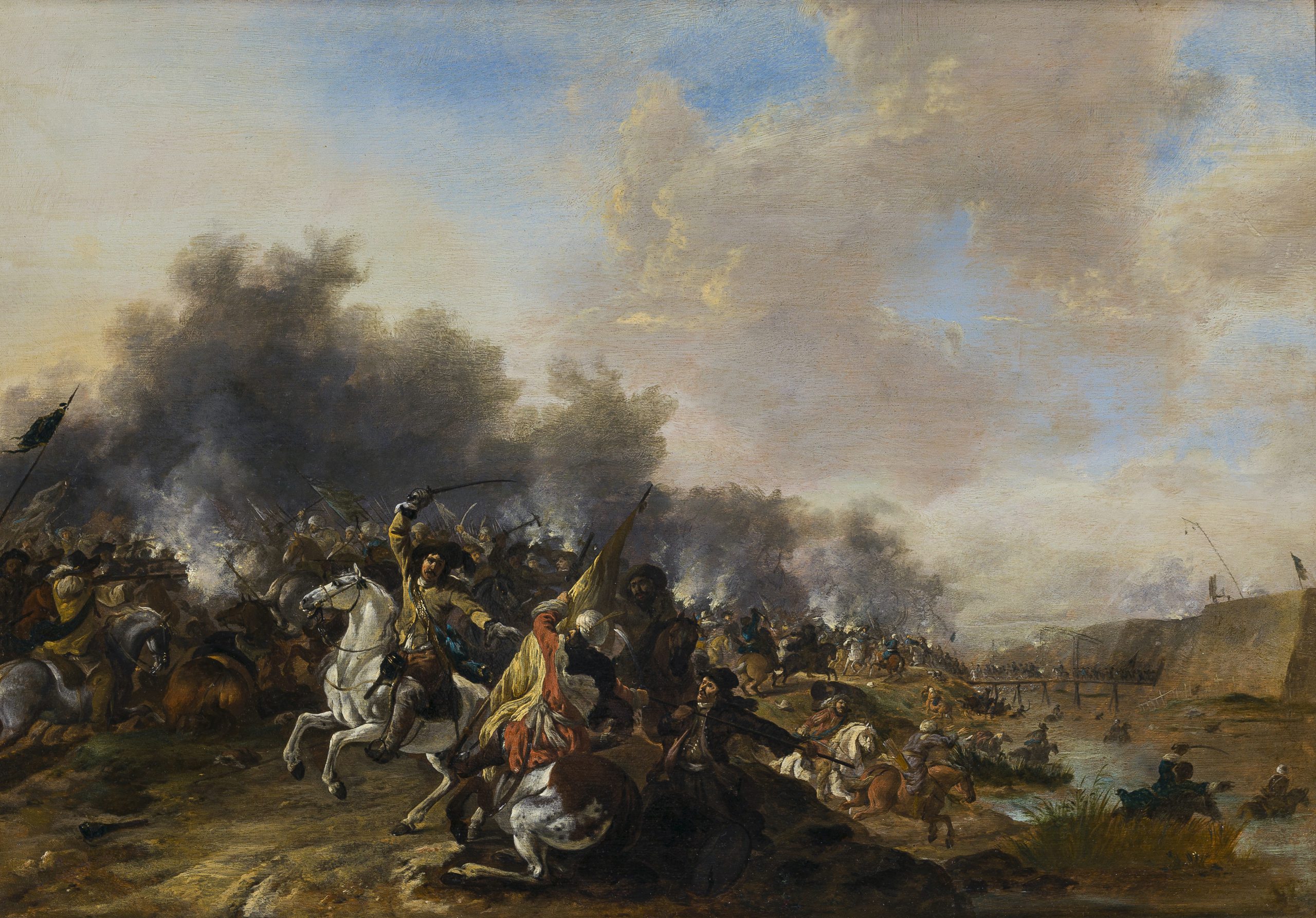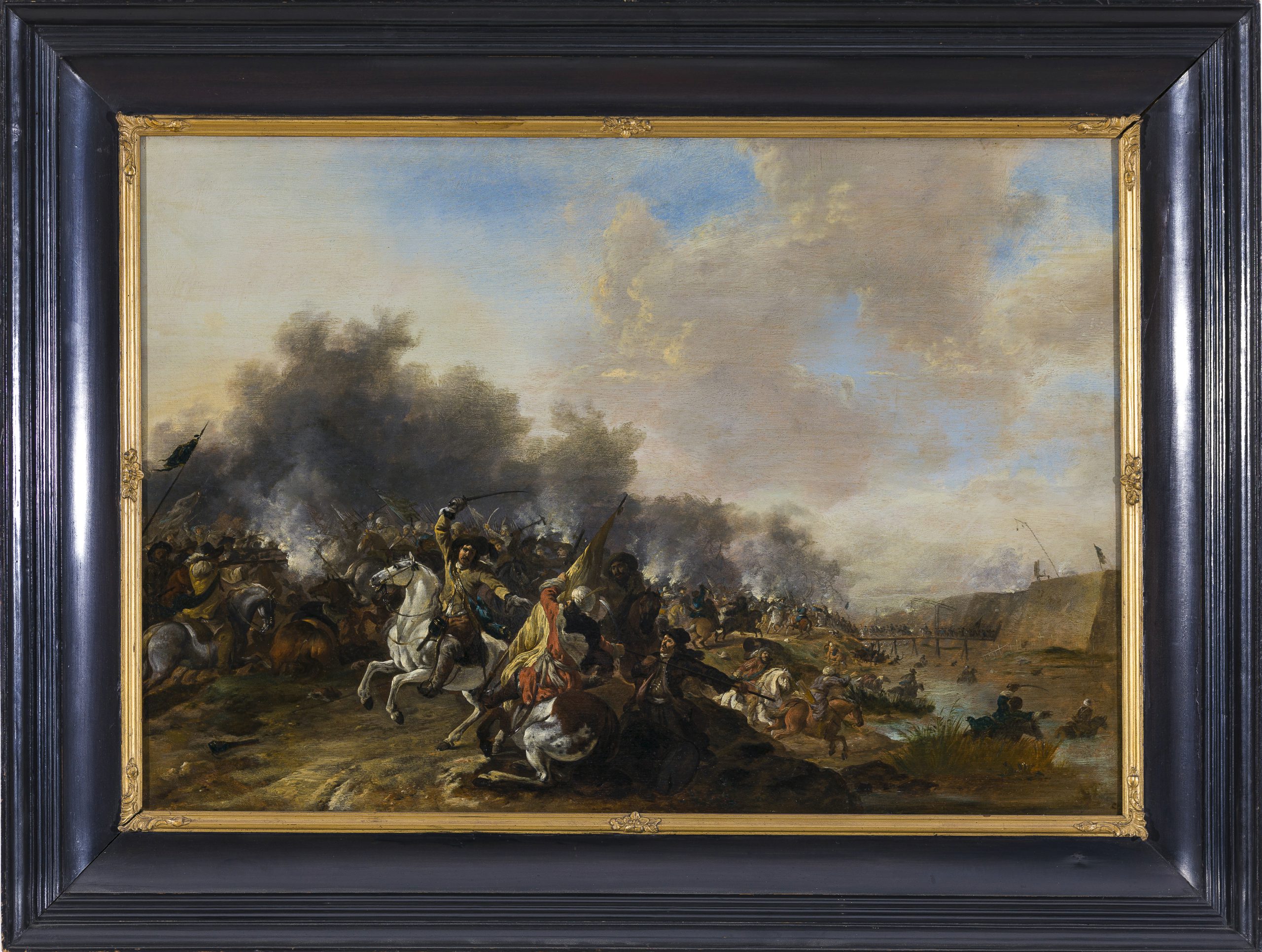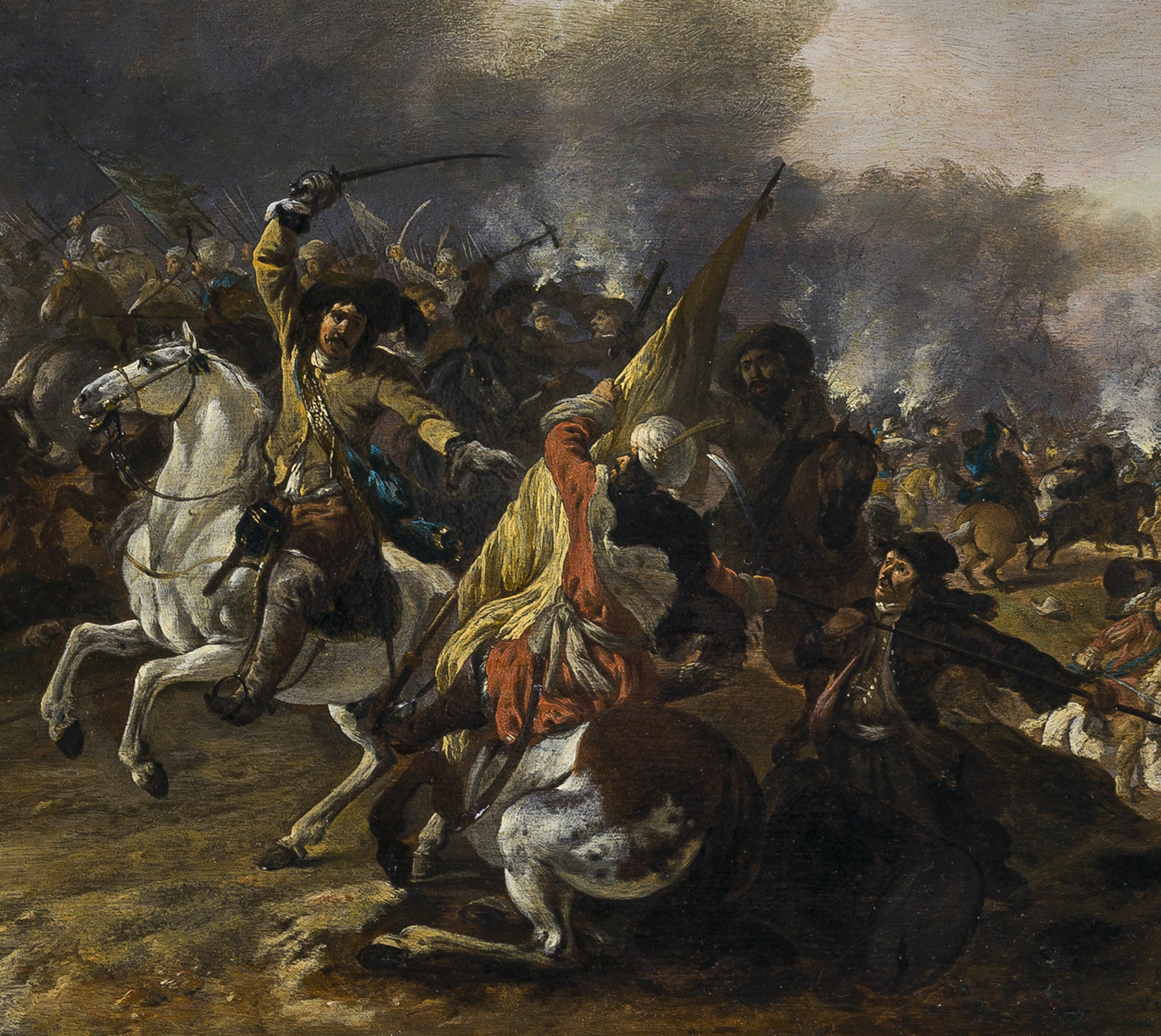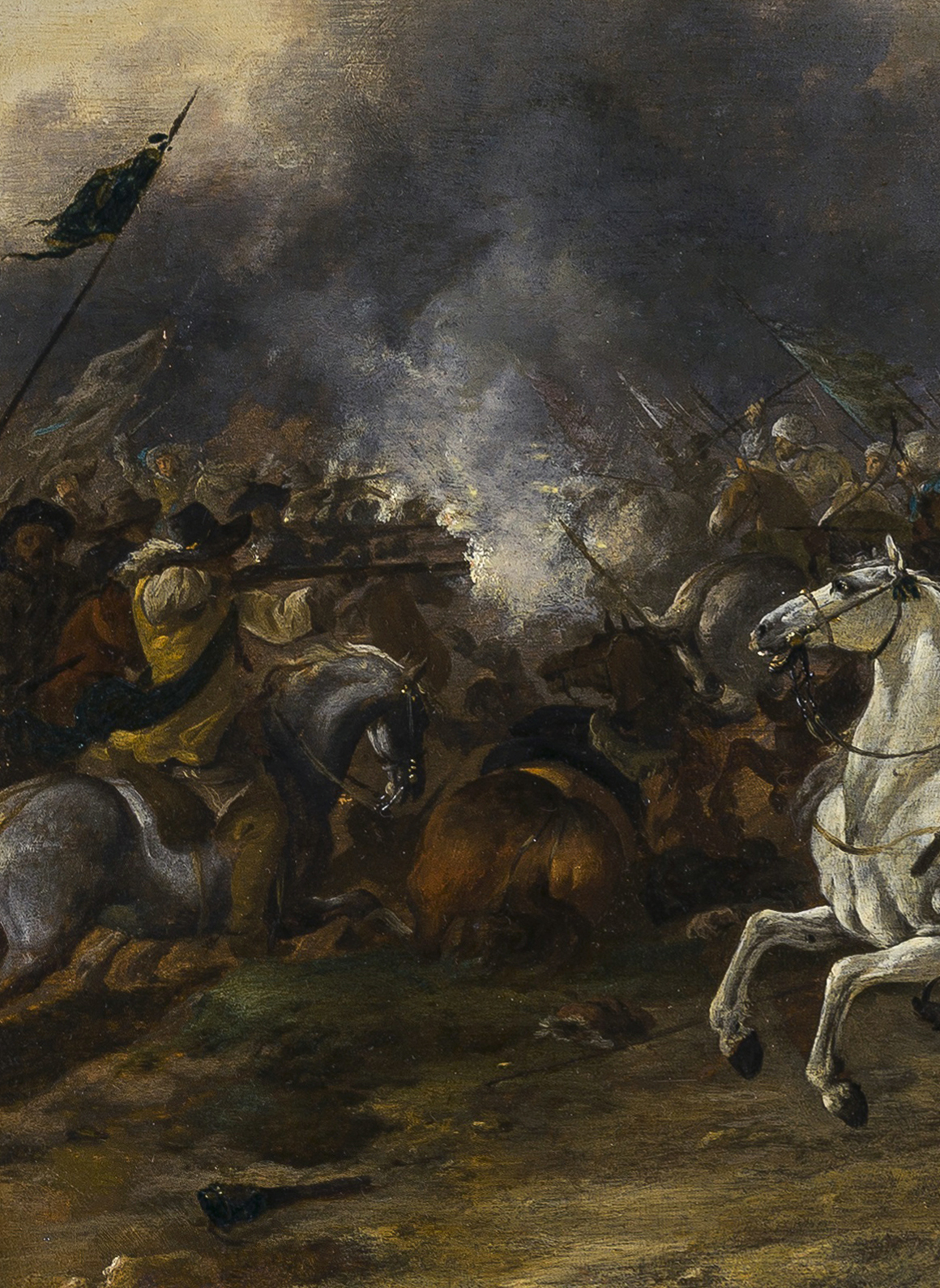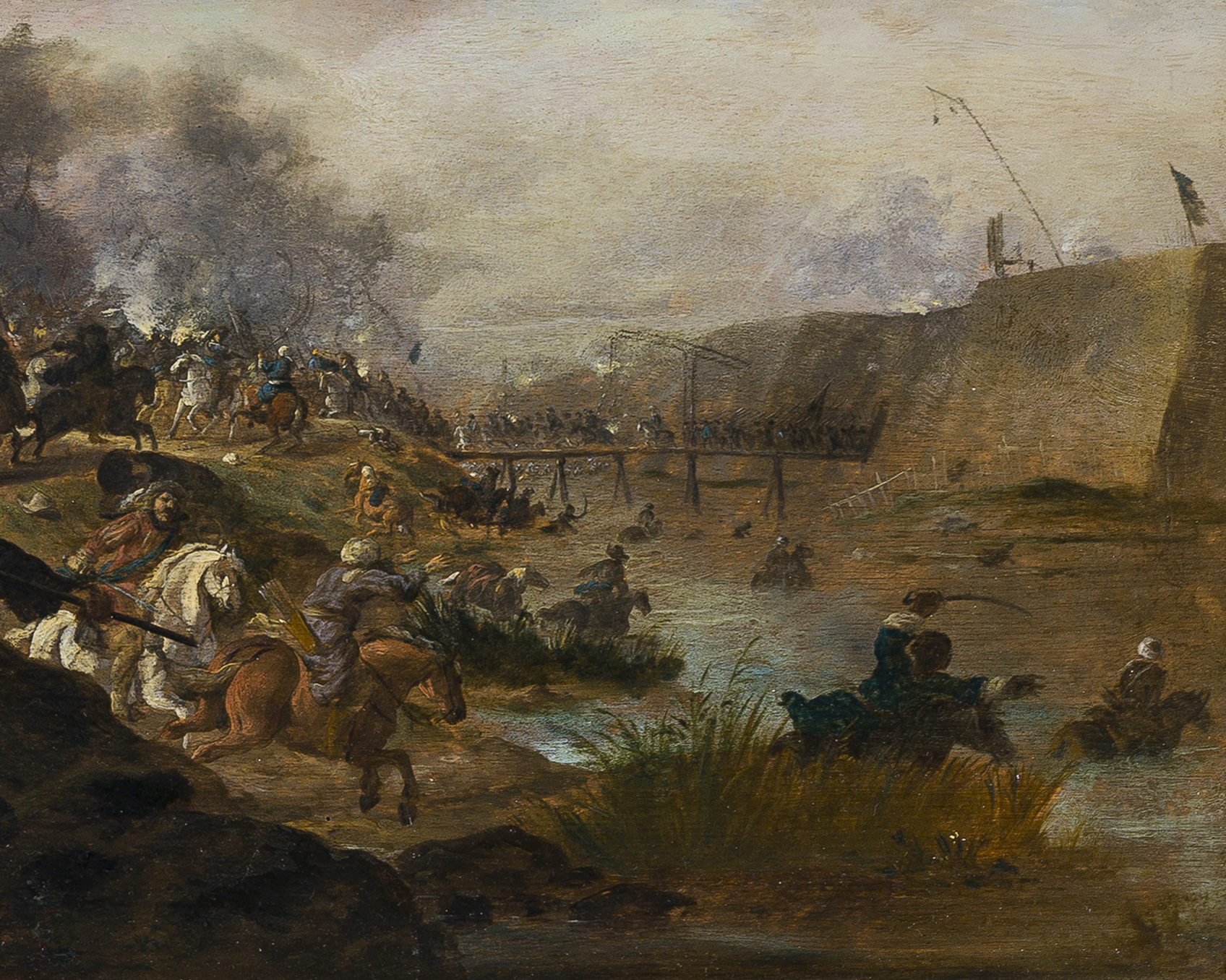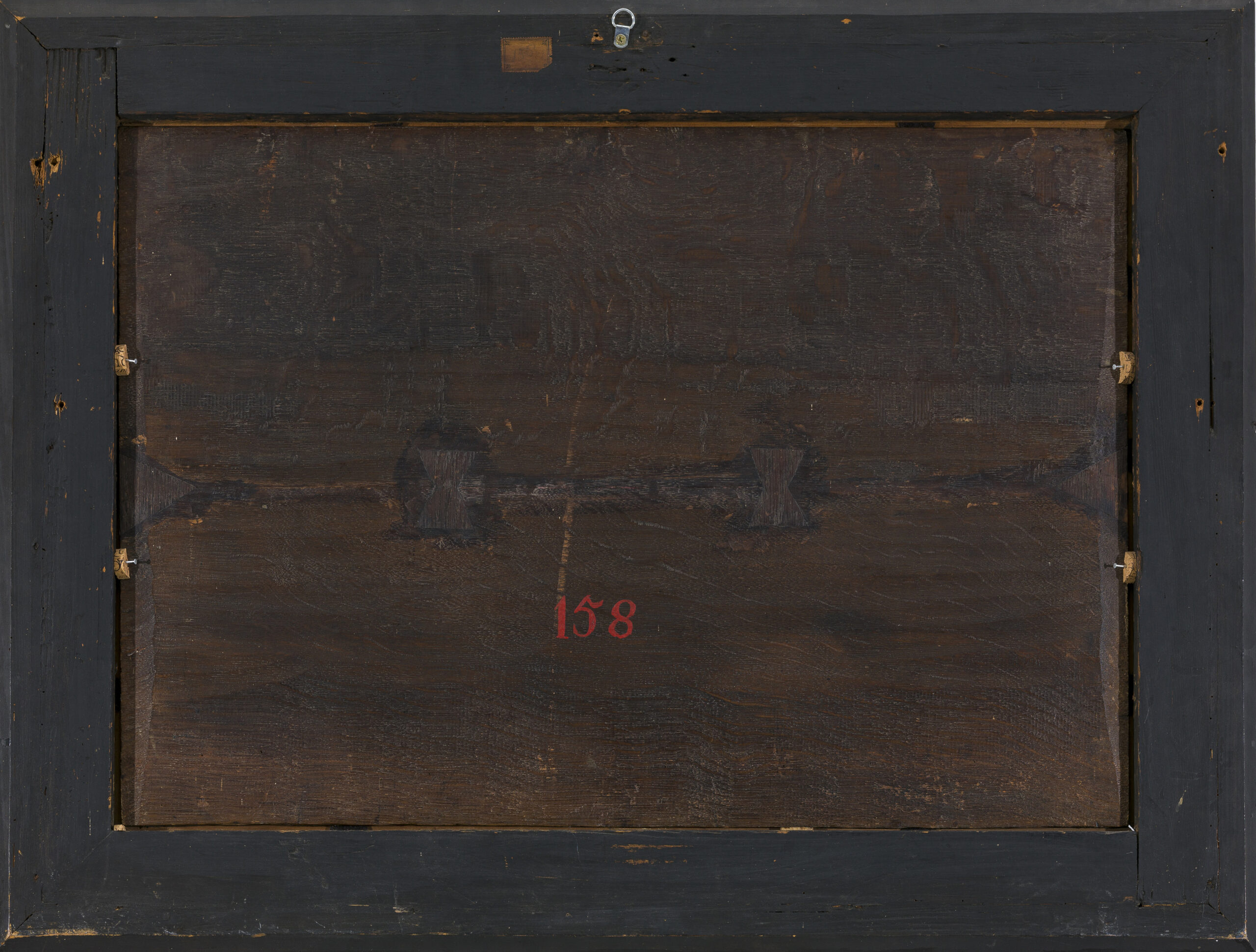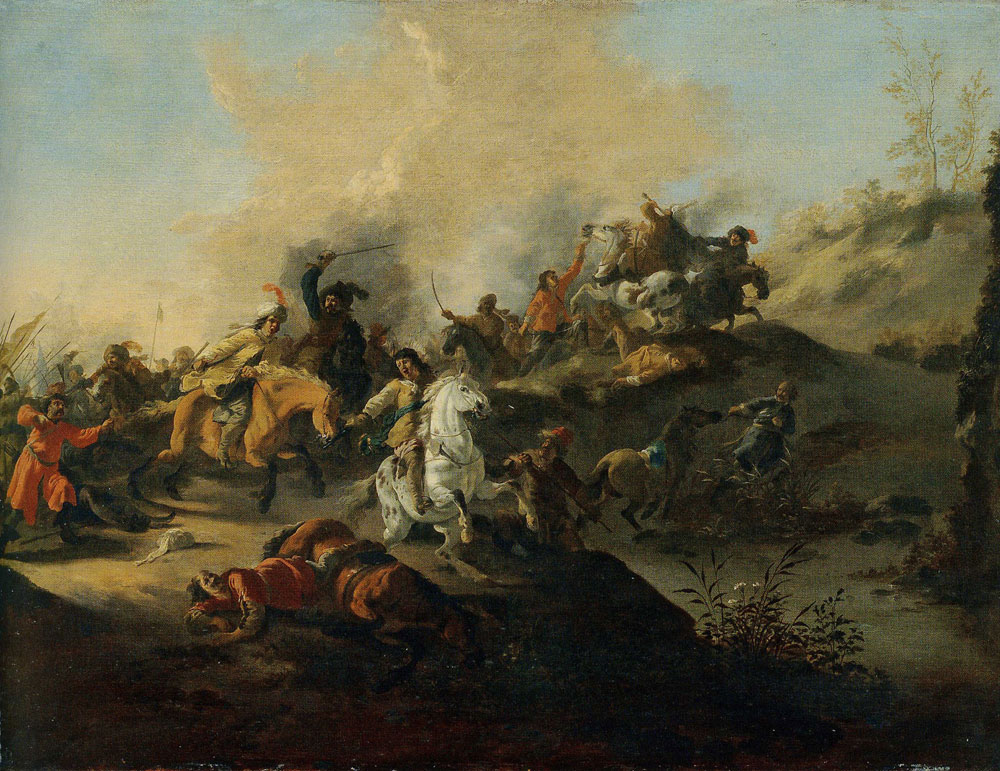DIRCK STOOP (Utrecht 1618 – c.1681 Hamburg)
Dirck Stoop (Utrecht 1618 – c.1681 Hamburg)
A Cavalry Skirmish between European and Eastern Armies
Oil on panel, 51 x 73.7 cm (20.1 x 29 inch)
Contained in a Dutch 18th-century ebonised frame with gilt inner slip
Inscribed in red paint with inventory number ‘158’ on the reverse
Provenance
Barons van Tuyll van Serooskerken, Slot Zuylen
***
Stoop was born in Utrecht as the son of the glass painter Willem Jansz Stoop, and was brother of the painter Maerten Stoop.1 He was first trained by his father, and continued his artistic education during a Grand Tour to Rome, where he lived for some ten years from circa 1635 to 1645, collaborating with other Dutch artist, such as Jan Baptist Weenix. By 1647 he had returned to Utrecht, where he remained for a decade or so. By the early 1660s he was working for the Portuguese Princess Catherine of Braganza, and followed her to London when she married King Charles II. He painted the portrait of the new Queen in 1662, but then left London because of the plague. By the late 1660s Stoop lived in Hamburg, where he remained for the rest of his life.
Stoop specialised in Mediterranean landscapes, inspired by his long sojourn in Italy, but is perhaps best known today for his cavalry skirmishes, in which he was able to show his command of composition and the depiction of horses – in his best pieces they approach the quality of Philips Wouwerman, the most notable painter of horses during the Golden Age. Battle scenes were a popular genre during the seventeenth century, which was plagued by wars: the Thirty Years’ War only ended in 1648. The present painting depicts a battle between European and Eastern armies, characterised by turbans and colourful clothing. During much of the seventeenth century, armies of the Ottoman or Turkish Empire invaded deeper and deeper into Europe, defeated by the armies of the Holy Roman Empire and its Christian allies at the Battle of Vienna in 1683, following the siege of that city for two months by the Ottomans. Such scenes were mostly depicted by Italian painters for noble patrons, who particularly valued such works, and Stoop is likely to have encountered the genre there.2
Our work can be compared to a painting of a similar scene in the collection of the Museum der Bildenden Künste in Leipzig (fig.).3 Other paintings by Stoop are preserved in the collections of the Rijksmuseum, Amsterdam, the Gemäldegalerie Alte Meister, Dresden, the National Gallery of Ireland, Dublin, the National Portrait Gallery, London and the Staatliches Museum, Schwerin and the Mauritshuis, The Hague.
SOLD
1. For the artist, see P.T.A. Swillens, 'De Utrechtsche Schilders Dirck en Maerten Stoop', Oud-Holland 51 (1934), p. 116-135 and175-181 and the biography in Saur Allgemeines Künstlerlexikon: die bildenden Künstler aller Zeiten und Völker, Munich 1992- , vol. 106 (2020) p. 320.
2. For the subject, see Giancarlo Sestieri, I pittori di battaglie: maestri italiane e stranieri del XVIIe e XVIII secolo - Battle painters: Italian and foreign masters of the XVII and XVIII centuries, Rome 1999.
3. Oil on panel, 50.2 x 66.3 cm, inv. no. 816; Jan Nicolaisen and Rüdiger Beck, Niederländische Malerei 1430-1800 im Museum der bildende Künste Leipzig, Leipzig 2012, p. 297.
